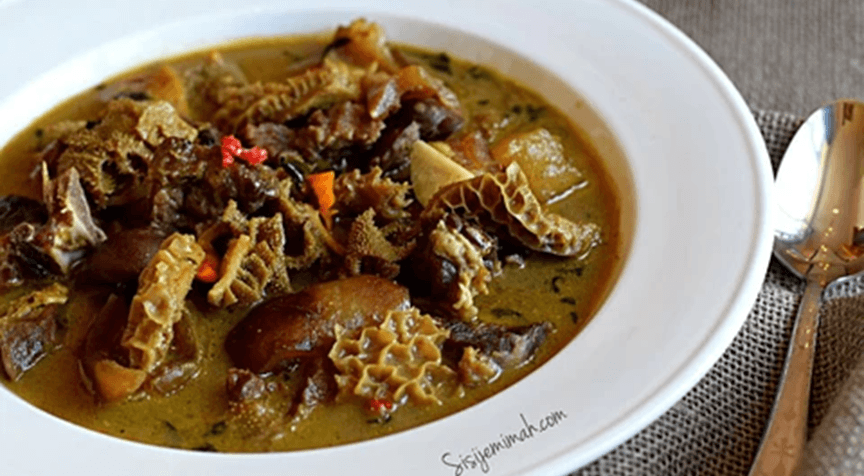Patient-centered communication and care includes universal trauma precautions. True or False
True
On August 26, 1920, women were granted the right to vote. No person was denied the right to vote, but restrictive state and federal laws such as poll taxes, literacy tests, and barriers to citizenship prevented many women from the right to vote. This is an example of structural racism. True or False?
True
Nutrition education and counseling are based on theory because theory predicts behavior change. True or False?
True
RDN Terrance is counseling a new client, Mr. Smith, with hypertension. Mr. Smith states that he wants to eat more fruits and vegetables. What is the best example of a SMART goal?
a. Add a side salad to dinner 2 nights per week for the next 4 weeks until the follow-up appointment and then re-assess the goal.
b. Eat a salad as a main course for breakfast, lunch, and dinner every day.
c. Try a new fruit.
d. Collect new fruit salad recipes and create a Pinterest board.
a. Add a side salad to dinner 2 nights per week for the next 4 weeks until the follow-up appointment and then re-assess the goal.
How do I handle a counseling situation when I am unfamiliar with the patient's culture? Which answer/s is incorrect?
a. To cover the most bases, provide nutrition counseling that fits the most prevalent culture.
b. While listening to the patient describing dietary habits, ask the patient about their cultural foodways and legacies.
c. Co-design nutrition counseling recommendations with the patient.
d. Align the nutrition counseling with the cultural foodways and practices that the patient has described as important to them.
a. To cover the most bases, provide nutrition counseling that fits the most prevalent culture.
Universal trauma precautions include all except what:
A. Small changes to the provider behavior and the health system practice
B. Tell the client that they have nothing to worry about
C. If a nutrition-focused physical exam is conducted, provide the client with a brief summary of what parts of the body will be involved and allow the client to ask questions
D. Encourage client collaboration during an appointment to enable trust and control
B. Tell the client that they have nothing to worry about
Cultural humility involves an ongoing process of self-exploration and self-critique combined with a willingness to learn from others. It means entering a relationship with another person with the intention of honoring their beliefs, customs, and values. It means acknowledging differences and accepting that person for who they are. True or False?
True
Pricilia, RDN receives a consult to educate an patient with CVD on the DASH diet. Pricila assesses her client's readiness to change and determines he is in precontemplation. What would be an appropriate intervention strategy for a patient in precontemplation?
a. Tell the client he should download an app to track the sodium content in his diet.
b. Provide pamphlets with low fat recipes.
c. Explore how CVD affects the client and situations in the client's life.
d. Advise the patient to sign up for the next heart-healthy cooking class in the outpatient wellness clinic.
c. Explore how CVD affects the client and situations in the client's life.
A client explains to the RDN, "I realize I am overweight, but this is not the time for me to change my diet." The best way for the RDN to respond, using a Motivational Interviewing approach, is by asking:
a. "How will your life improve as you make these changes?"
b. "What do you know about the relationship between weight and stress?"
c. "What are the disadvantages and advantages of focusing on change right now"
d. "What obstacles are your facing that are keeping you from reaching your goals"
c. "What are the disadvantages and advantages of focusing on change right now"
How do I address an unhealthy cultural practice (challenge questions)?
a. Ignore it
b. Listen to ascertain how important this cultural practice is to the patient.
c. Consider the overall context (medical history and status, psychosocial factors) and determine changing this practice is really important in the overall picture.
d. Ask the patient how they think they can modify the practice.
a. Ignore it
b. Listen to ascertain how important this cultural practice is to the patient.
c. Consider the overall context (medical history and status, psychosocial factors) and determine changing this practice is really important in the overall picture.
d. Ask the patient how they think they can modify the practice.
This Matigenka child symbolizes what?

A. A weird kid
B: A different worldview
C. How we all have unique ways of viewing things depending on our context
D. B and C
D. B and C
Attribution theory was developed in the 1950s by Fritz Heider to explain how people form explanations for the causes of social behavior. He explained that we make causal and responsibility attributions for health behavior. The way we attribute the cause frames the way we view behavior and the way we take action to solve a problem. True or False?
True
Carl Rogers humanist learning theories underpin motivational interviewing. True or False?
True
When clients show ambivalence, they feel torn about making behavioral changes and find reasons why they cannot make those changes. A natural reaction from a healthcare provider may be to tell or dictate the healthy behaviors for health promotion and disease prevention. What is this reaction called?
a. Backfiring
b. The Expert Trap
c. The Rebellious Phase
d. The Righting Reflex
d. The Righting Reflex
How do RDNs promote health equity?
a. leave it to someone else who knows more
b. become involved in the Academy of Nutrition and Dietetics and the Society for Nutrition Education and Behavior's policy and advocacy groups.
c. keep updated on policy changes that impact health equity
d. create awareness about health equity and social justice issues within and beyond your social networks.
b. become involved in the Academy of Nutrition and Dietetics and the Society for Nutrition Education and Behavior's policy and advocacy groups.
c. keep updated on policy changes that impact health equity
d. create awareness about health equity and social justice issues within and beyond your social networks.
Nigerian Pepper Soup is an example of what?

A. A West African soup that cures the soul just as chicken soup does in North America
B. A soup that no one eats
C. An example of a cultural tradition or legacy that should be considered when making nutrition recommendations
D. A and C
D. A and C
When the US was referred to as a "Melting Pot" this represented the desire for "others" to assimilate to dominant US culture. True or False?
True
A theory is a set of interrelated concepts that present a systematic view of events by specifying relations among variables to explain or predict the events. True or False?
True
What is the best way to ensure collaboration when counseling a client about a meal plan for diabetes management?
a. Emphasize the benefits of portion control.
b. Stress the importance of following the meal plan.
c. Recommend healthy food choices consistent with the client's individual food preferences.
d. Review the health consequences associated with poor dietary control.
c. Recommend healthy food choices consistent with the client's individual food preferences.
How do I learn about different cultures?
a. read
b. travel
c. listen and observe
d. learn about my own biases so that I recognize how they may prevent me from learning from people who are different
a. read
b. travel
c. listen and observe
d. learn about my own biases so that I recognize how they may prevent me from learning from people who are different
When an RD practices patient-centered care, communication is key. Which is not an example of "noise" that an RD should consider when communicating with patients?

A. The client's mood
B. The life experience of the client
C. The attitude of the client
D. The day of the week
D. The day of the week
Key attributes of cultural humility include all except which:
A. Fresh breath
B. Openness
C. Self-reflection/awareness
D. Empathy and compassion
A. Fresh breath
The Transtheoretical Model by Prochaska describes a sequence of attitudes and intentions and behavioral steps people take to change behavior. An appropriate nutrition counseling strategy for a client in the pre-contemplation stage is to recommend goal setting and behavioral contracting. True or False?
False
Juanita RDN is counseling a college student, TJ, who is struggling with recent weight gain. TJ states, "I don't think I snack too much late at night. No more than my friends do. Sure, I know it kind of makes me feel sluggish in the morning for my early morning classes, but everyone else is doing it." Which is the best response to intensify change talk?
a. How many snacks do you eat per day?
b. Though you aren't convinced that you are eating too much late at night, you are starting to feel that it might be making you feel less energetic in the morning than you would like.
c. Are you concerned about the types of snacks you are eating at night?
d. Have you ever tried just not eating after 7pm?
b. Though you aren't convinced that you are eating too much late at night, you are starting to feel that it might be making you feel less energetic in the morning than you would like.
Identify the statement that contains sustain talk
a. "I've been thinking that maybe I should stop drinking soda"
b. "I could probably try some of those flavored waters"
c. "Quitting soda would never work for me"
d. "I could try by decreasing one soda per day"
c. "Quitting soda would never work for me"